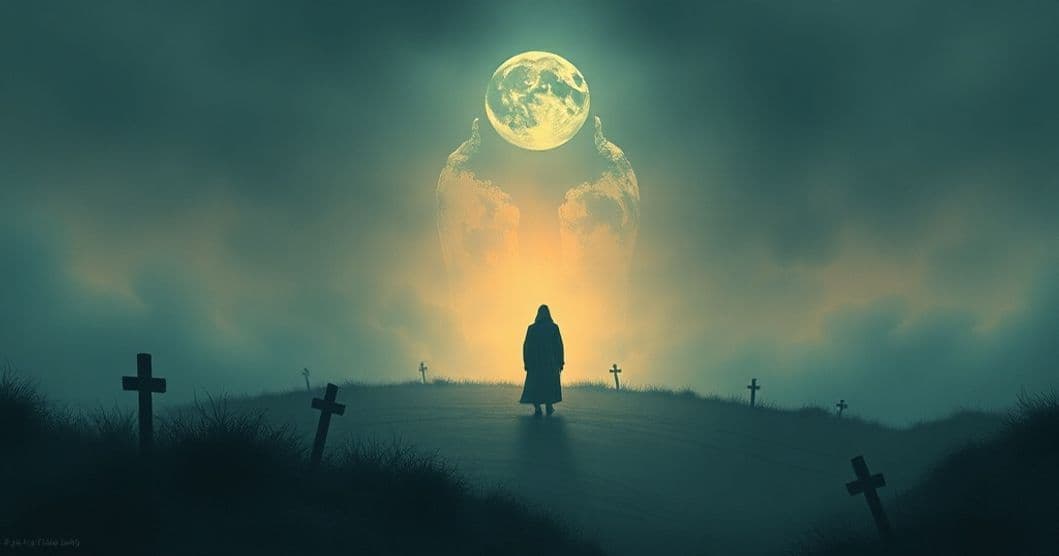The Unseen Funeral: A Dream of Mystery, Mourning, and Unrecognized Presence
Part 1: Dream Presentation
Dreams often serve as portals to our unconscious, revealing truths we may not yet acknowledge in waking life. This particular dream, with its stark imagery of a hidden funeral scene, offers a compelling case study in how the mind processes themes of loss, identity, and the unknown. In this dream, the dreamer finds themselves driving down a sun-dappled rural highway—a journey that symbolizes transition or exploration—when they encounter a field filled with parked cars, suggesting a gathering or event. The path leads to a hidden clearing surrounded by trees, an enclosed space that feels both intimate and isolating. Within this clearing, rows of open caskets reveal silent figures, creating an atmosphere of somber curiosity. The dreamer walks among these caskets, while mourners in black stand at a distance, forming a boundary between the observer and the deceased. At the center, a preacher on a weathered stage holds a Bible, nodding silently but communicating nothing audible—a powerful symbol of unspoken truth or authority. The dream ends abruptly, leaving the dreamer with unrecognized faces and an unresolved sense of mystery.
Part 2: Clinical Analysis
Symbolic Landscape: Decoding the Dream's Visual Language
Want a More Personalized Interpretation?
Get your own AI-powered dream analysis tailored specifically to your dream
🔮Try Dream Analysis FreeThe rural highway serves as a powerful symbol of life's journey—both literal and metaphorical. Its sunlit clarity contrasts with the hidden clearing, representing the tension between surface awareness and deeper unconscious activity. The parked cars suggest social connection or a collective event, yet their random arrangement hints at disorganization or emotional fragmentation. The trees surrounding the clearing create a threshold space, a liminal zone between the known (the highway) and the unknown (the funeral scene), a common motif in dreams representing transition.
The open caskets are perhaps the most striking symbol. Unlike closed caskets, which might represent final closure, open ones imply exposure, vulnerability, or the need to confront what remains unfinished. The diversity of men and women within them suggests a collective rather than individual loss—perhaps grief over societal changes, lost relationships, or unfulfilled potential. The mourners in black attire embody collective mourning, their uniformity suggesting shared grief, yet their distance from the dreamer creates an emotional barrier, symbolizing the dreamer's separation from or unique perspective on these experiences.
The preacher, standing with a Bible and silent communication, represents authority figures or internalized moral frameworks. His unreadable expression and unspoken message reflect the dreamer's uncertainty about life's purpose, guidance systems, or the meaning of rituals. The absence of sound amplifies the dream's tension, emphasizing the ineffability of certain truths or the dreamer's struggle to
